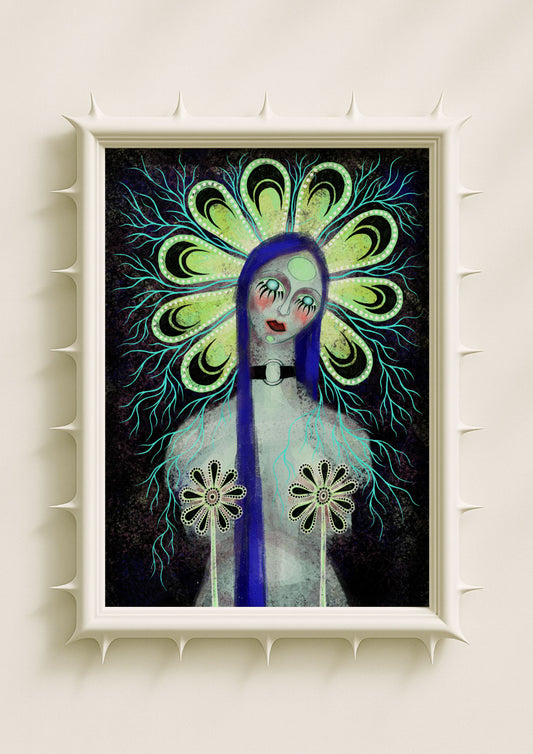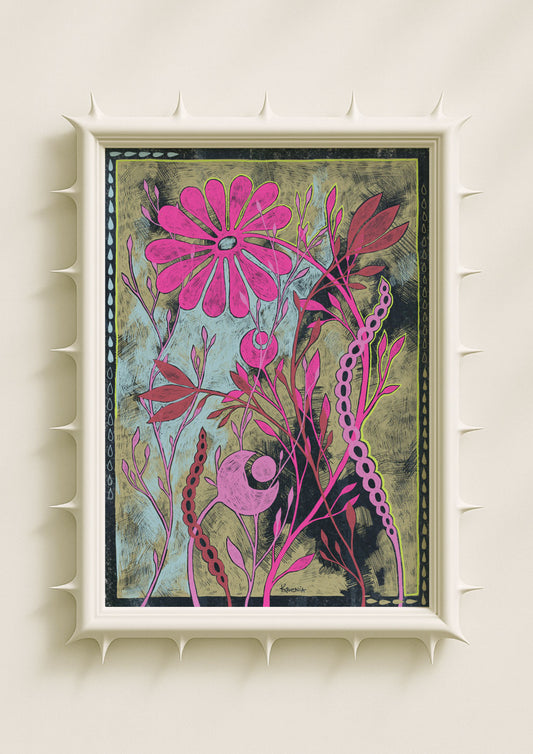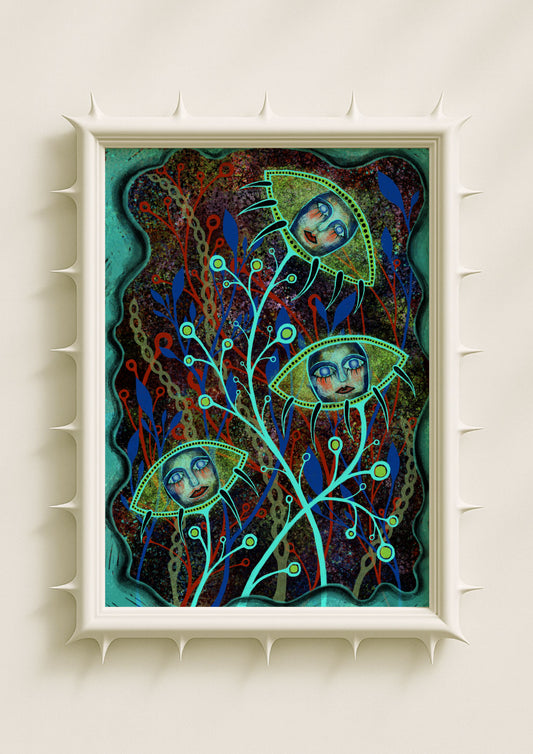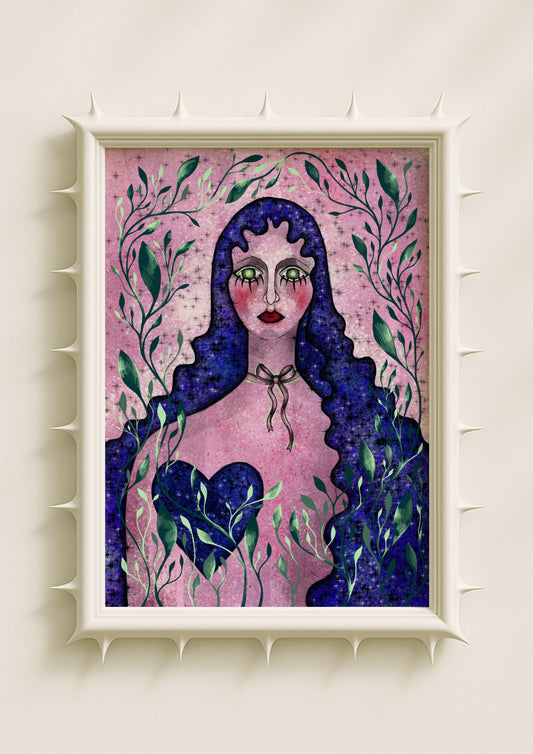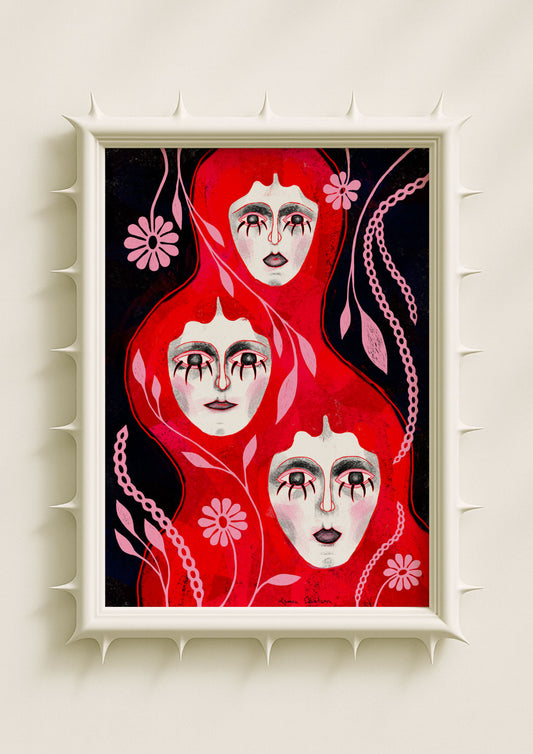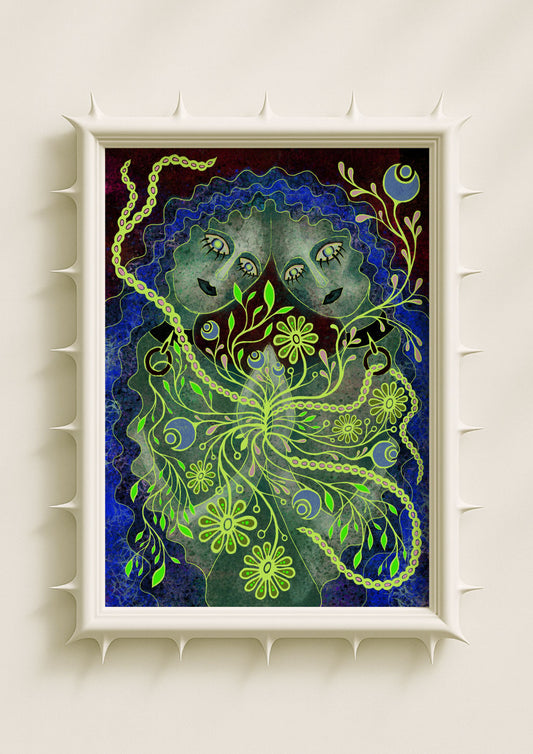Portraits have always held a quiet authority. Even in a room filled with objects, colours and textures, the human face draws the eye first. There is something instinctive about the connection: a portrait doesn’t just decorate a space — it meets you. It carries presence. It creates a kind of emotional gravity that other subjects can’t quite replicate. Portrait posters remain timeless because they echo this ancient instinct to read expression, mood and story in the smallest details of a gaze.
When I work on my own portraits, I’m always aware of the delicate tension between interior emotion and external stillness. A face can be soft but powerful, quiet but vivid. It holds ambiguity in a way that invites the viewer to linger. Portraits become mirrors, not because they resemble us literally, but because they reflect something familiar, something we recognise even if we can’t articulate it.
Why Faces Hold Such Emotional Weight
We respond to faces long before we understand language. This is why portrait posters feel alive in a room. A portrait introduces a form of companionship — subtle, silent, yet undeniably present. Even the most minimal space changes when a face enters it. Light becomes more intimate, shadows feel softer, and the room gains a quiet emotional rhythm that wasn’t there before.

Portraits also bring a sense of pause. They slow the energy of a space by inviting the viewer into a relationship rather than an observation. When you walk past a symbolic face or a surreal figure, you don’t simply look; you sense. You try to understand what the expression means, what emotion sits behind the eyes, what story might be hidden in the lines of the face.
A well-placed portrait poster becomes a point of emotional focus — a centre that anchors the room in mood and tone.
Surreal Portraits and the Power of Ambiguity
In my own work, the portrait is never entirely literal. I’m drawn to ambiguity — the kind that lives between clarity and dream. A surreal portrait allows emotion to flow more freely because it’s not confined to realism. The softness of the features, the graphic lines around the nose and lips, the washed-out colours or the unexpected palette shifts all work together to create a face that feels expressive but not fixed.
Ambiguity is powerful. It gives the viewer emotional space. Instead of telling a story, it creates a mood that shifts depending on the person who looks at it and the moment in which they do. One day the portrait may feel fragile; another day it may feel bold. Light changes, mood changes, and with them, the meaning of the face also changes.
This fluidity is what makes surreal portraits such compelling posters. They breathe with the room. They never settle into a single interpretation.
Softness as Emotional Language
Softness is often underestimated. In my portraits, I lean into soft backgrounds, drifting botanicals, pale skin tones and gentle gradients because they allow the emotional tension of the face to emerge without force. Softness invites closeness. It creates intimacy without overwhelming the space.

The contrast between delicate colours and sharp graphic outlines makes the expression feel more alive — almost like a whisper held in stillness. Softness becomes a form of honesty, a way to show vulnerability without fragility. For many interiors, especially bedrooms, studios and quiet living spaces, this kind of softness shifts the atmosphere into something more reflective and grounded.
Symbolic Expression and Visual Storytelling
Symbolism has always been present in portraiture, and in my work it often appears in small details: the direction of a gaze, the shape of a floral form, the tension in a line, the colour that lights a cheek or shadow. Sometimes the portrait feels like it belongs to another time; sometimes it feels rooted in folklore or myth. These symbolic layers give the viewer something to return to — a sense that the artwork holds more than what is visible at first glance.
Symbolic portrait posters also work beautifully in interiors because they bring emotional and narrative depth without requiring a literal story. They create presence, atmosphere and identity. A viewer might not know exactly why a portrait feels meaningful, but they sense it. And that quiet emotional resonance often becomes the soul of the room.
How Portrait Posters Shape the Atmosphere of a Room
A face changes a space. It can soften a minimalist room, add depth to a neutral palette, or bring emotional warmth into an interior that feels too structured. Portrait posters thrive in spaces where mood matters — reading corners, personal studios, intimate bedrooms, or eclectic living rooms that gather objects with intention.
Portraits also interact beautifully with natural light. A soft shadow across the artwork can change the mood entirely. The gaze becomes more mysterious in the evening, more open in the morning. This sensitivity to light makes portrait posters feel alive in a way that abstract or geometric pieces rarely do.

Most importantly, portraits create connection. They humanise a room. They add a sense of presence that feels both grounding and inspiring.
Why Portraits Remain Timeless
Portraiture never goes out of style because humans don’t stop responding to faces. A portrait is a conversation partner, a fragment of a story, a familiar stranger, a feeling captured in visual form. Whether surreal, symbolic, soft or expressive, portrait posters give rooms a quiet emotional centre — something stable yet alive.
They remind us that interiors are not just spaces we live in, but emotional environments that shape how we think, feel and create. And in that environment, the gaze of a portrait can become a gentle anchor, a source of intimacy, and a way of seeing ourselves more clearly through the quiet expression of another.
